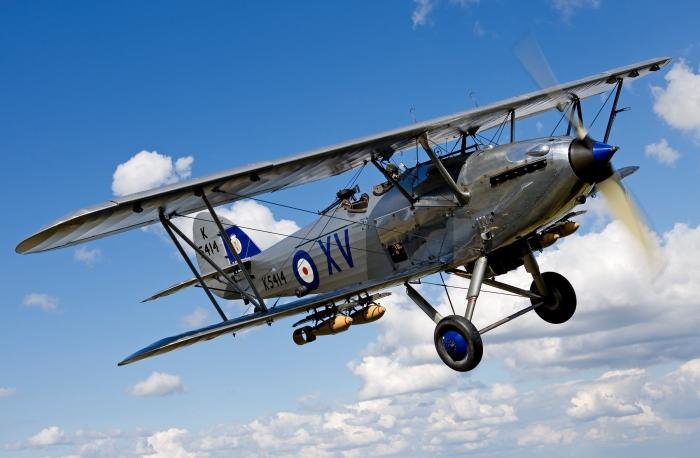Bringing a 1930s fighter back to life is no simple task, but the Shuttleworth Collection’s skilled team are the crew to do it!
There is always a vast variety of eye-catching historic aircraft on show at Old Warden in Bedfordshire, home of course to the justly famous Shuttleworth Collection.
Visitors to the atmospheric location were in for a particular treat early this year. Shuttleworth’s traditional pre-season engineering event took place over the weekend of February 4 and 5, and was naturally blessed with plenty of visitors.
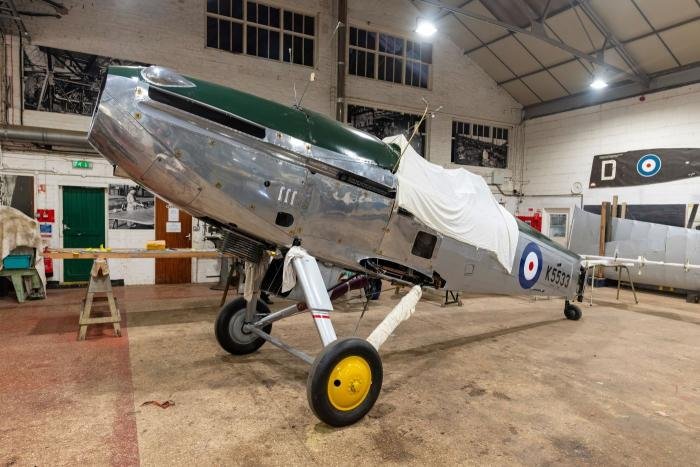
Several of the collection’s key exhibits were showcased, enabling enthusiasts to either see them at closer quarters than usual or to view more of their working parts, as the attraction’s skilled engineers prepared their charges for the season ahead. For many, the weekend’s star attraction was 1935-built Hawker Hind G-AENP (marked as ‘K5414’). This wonderfully charismatic biplane is not always in an easily viewable position on normal visiting days, and its presence during the engineering weekend also enabled visitors to see at first hand the consistent progress being made with it.
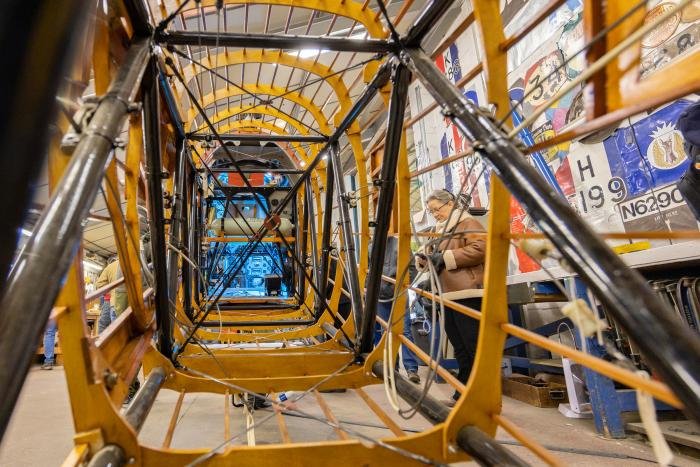
At the time, the airframe was still without its wings – the latter are still in the process of being stripped and re-covered. One wing and the centre section of the top wings have already been prepared for new fabric, while two others are well advanced, leaving work on one other wing yet to be started.
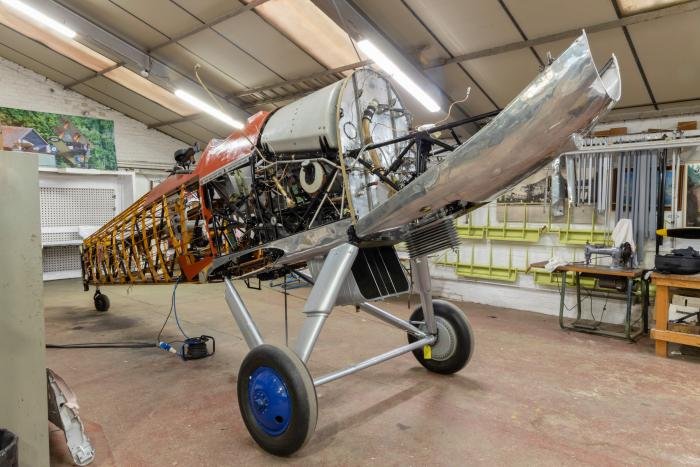
After much paint removal and cleaning, most of the metal has been shown to be in great condition, with a few areas that need some minor work. Most of the wing work has been carried out by volunteers, which has enabled the project to continue to make progress even while the full-time engineers are busy with other tasks.
The fuselage is much further advanced and, apart from a few small jobs, is now very close to having the fabric applied. Some of the wood has been replaced as part of the current restoration, but much of the earlier material has simply been retained and cleaned, or repaired where required. The wooden structures have now been fixed back around the tubular frame of the Hind, meaning the aircraft is starting to look close to completion. However, with the fabric removed visitors had a golden opportunity to take a good look inside the Hind’s fuselage, where a lot of work has taken place.
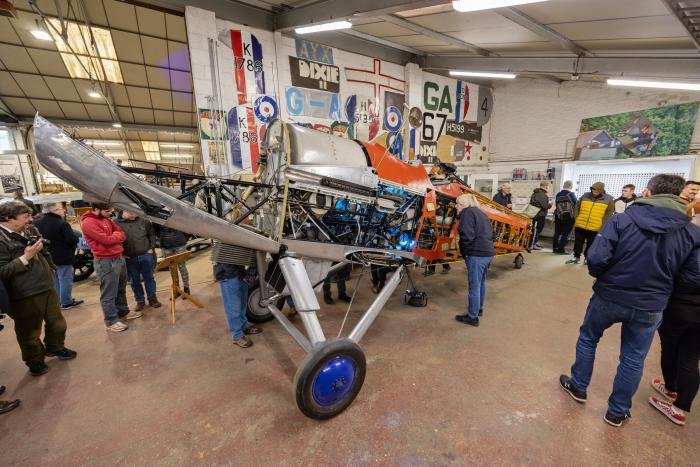
The aircraft was donated to Shuttleworth by the Afghan Air Force in 1971 and had been restored to flight by 1981. At that time, almost all the wood was replaced as part of the restoration in addition to refurbishing all the metal parts to make the aircraft airworthy. The venerable Hawker had been delivered along with several other items not required for flight – due to time constraints and other factors these parts were simply placed into storage. Until recently, this extra cache had been largely forgotten, but now the team is working dutifully to fit out the Hind to its original specification.
Despite having this treasure trove of items to include, there were still some missing parts that the team needed to find or replace. Among these was the bombsight – thankfully, the collection had an example of one in store. Shuttleworth engineer Andy Preslent recalled: “The bombsight was donated many years back and we also had the original screw jack for it in the boxes of unfitted items. We didn’t have any of the parts in between, so our machine specialist Dave Scott started to work on a plan.”
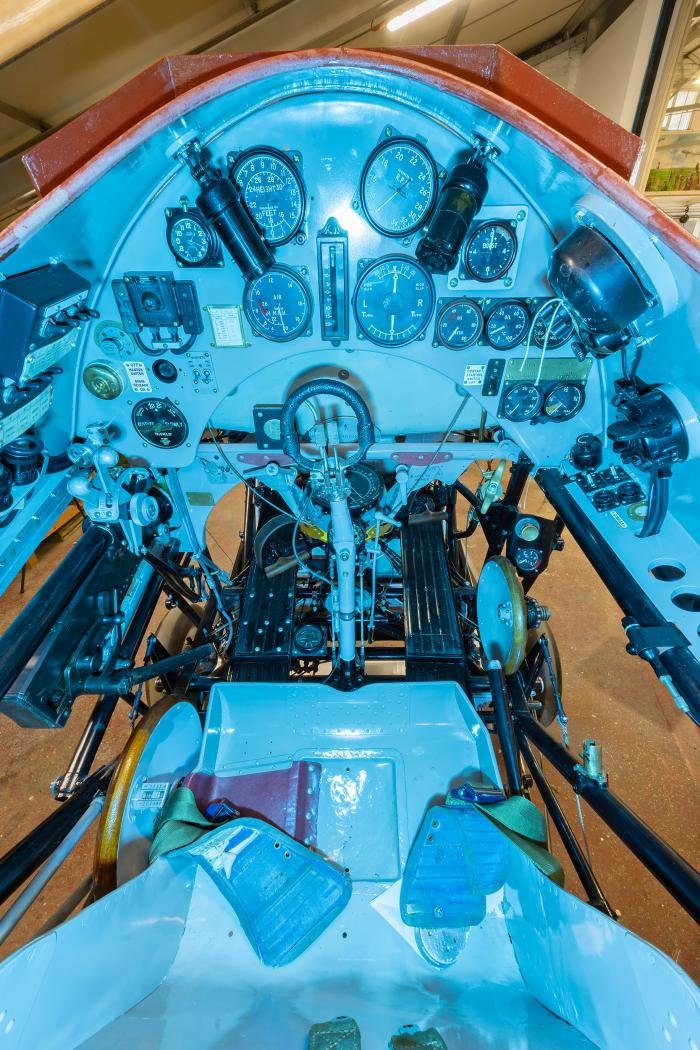
Dave is no stranger to creating missing parts for Shuttleworth aircraft and while his handiwork might often go unnoticed, it makes a huge difference. “We had the bombsight and the screw jack, but nothing in between,” Dave confirmed. “With little to go on, I turned to the internet and managed to find a digital copy of the bombsight manual. It contained a line drawing assembly of how the sight is attached to the levelling mount. From that, I could use the jack that we had and the bombsight itself to work out the sizes of the missing parts for me to recreate them.
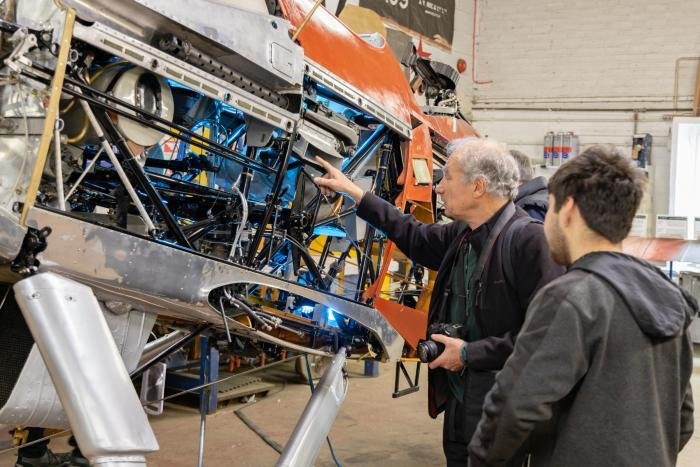
“The levelling mount has tap adjustment controls to position fore and aft, and up and down, which needed making. The sight sits on a spigot and the levelling mount was originally a cast unit with three mounting points with rubber bungs to reduce vibration. We made the reproduction from solid metal, rather than a cast unit, but it’s otherwise exactly as it would have been in the original.”
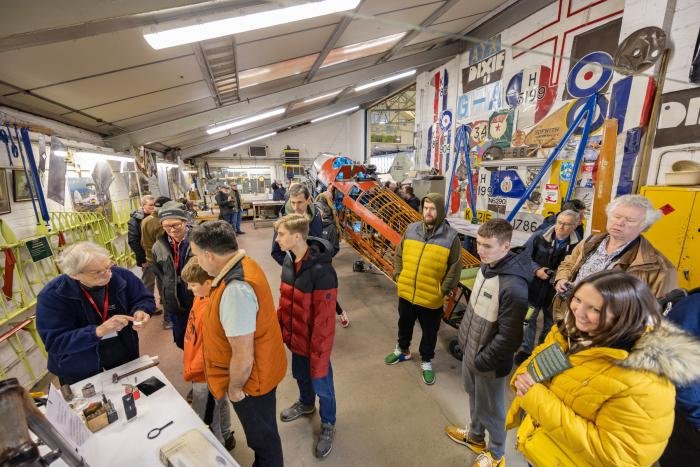
The extremely rare bomb aimers panel that sits below the pilot’s seat is an original. It has been refurbished and reinstalled. The instruments on this panel are not original to this airframe but are ‘period’ for the Hind. The various other components on the panel – switches and sockets – are restored originals.
In the front cockpit, the Hind now has the original Morse key fitted to the right-hand side of the fuselage along with a reproduction rheostat control for the pilot’s heated goggles. There’s also the bomb dump controls along with many of the bomb aimer duplicate controls – the latter enabled the pilot to carry out certain tasks if his fellow crew member became unable to do so.
The Constantinescu synchronisation (interrupter gear) system that allowed the forward-facing gun to shoot through the propeller has been installed into the aircraft using reproduction parts made by Dave in the machine shop. This includes a non-functioning replica bronze coloured tube mounted to the right-hand side of the cockpit by the pilot’s feet, representing the hand pump.
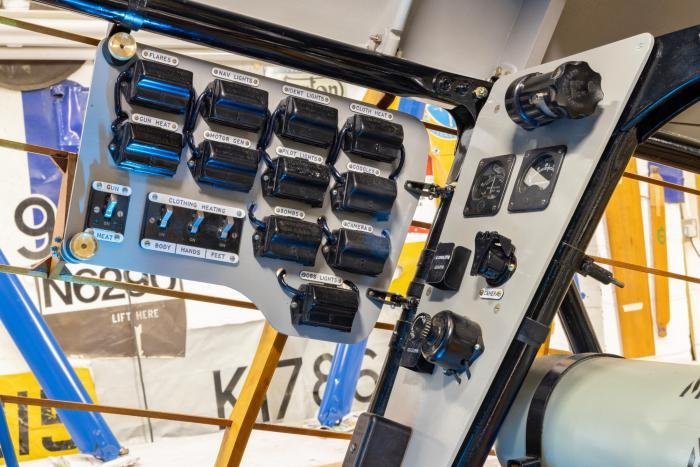
There’s also a replica tap (used to turn on the hydraulic fluid to the gun) fitted to the left-hand side of the instrument panel. The gun on the Hind was not previously installed, but Shuttleworth had an example available that’s now in place with a new muzzle end. The latter was again fabricated by Dave to closely replicate the appearance of the original.
In the back of the rear cockpit are two reproduction fuses, switches, controls and instrument panels. Dave had drawings of these panels, but the dimensions had to be calculated by scaling them from the fuses and switches. Although the panels are new, they are populated with original parts. There’s also a set of ammo drums located at the side of the seat – they’re actually three-dimensional printed replicas, but they certainly look the part.

The rear cockpit has also been the focus of much refurbishment. The gun ring has received a lot of attention and the upper wooden decking has been restored. Another lovely addition is an original Hawker data plate containing all the patent numbers. It has been fitted onto the aircraft’s gun ring, along with duplicated sockets for the bomb aimer to utilise when in the seated position, adding yet more accuracy to the restoration.
The machine’s classic Rolls-Royce Kestrel engine wasn’t on display during the engineering weekend but has progressed a great deal following some significant work to nurse this rare powerplant back to full health. Not surprisingly for such a venerable artefact, there have been a few challenges to overcome. Work has taken place on the crankshaft and the skew gear has been replaced. The wheel casing is now back together, and the crank is back in place with all rods fitted, so it’s ready for reassembly prior to fitting and testing.
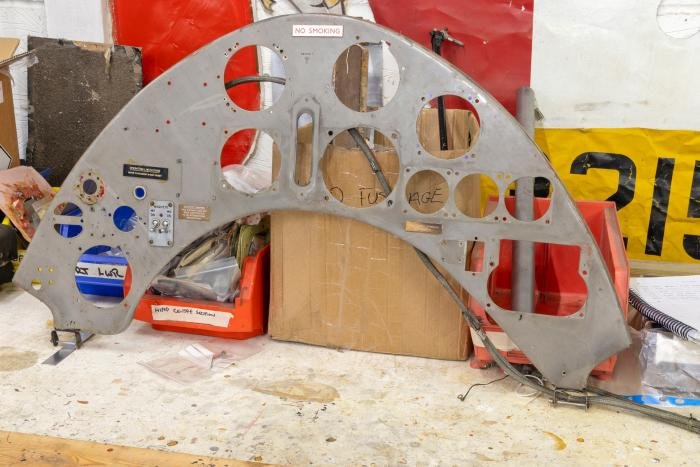
The Hind may be grabbing the headlines, but it certainly wasn’t the only focus of interest during February’s showcase. This year, the ‘blister’ hangar and adjacent workshop space were also occupied by Supermarine Spitfire Mk.V AR501, plus Shuttleworth’s Gloster Gladiator, Blériot and Bristol F2b Fighter.
The Spitfire has recently completed its annual service and was raised ‘tail up’ for pre-booked visitors to sit in the cockpit. The elevated position provided a flying attitude view over the nose and wings. Pre-booked tickets for this experience had predictably sold out in advance, but two special Spitfire Experience Days were also scheduled for June and September for further opportunities to sit in this hallowed machine’s cockpit.
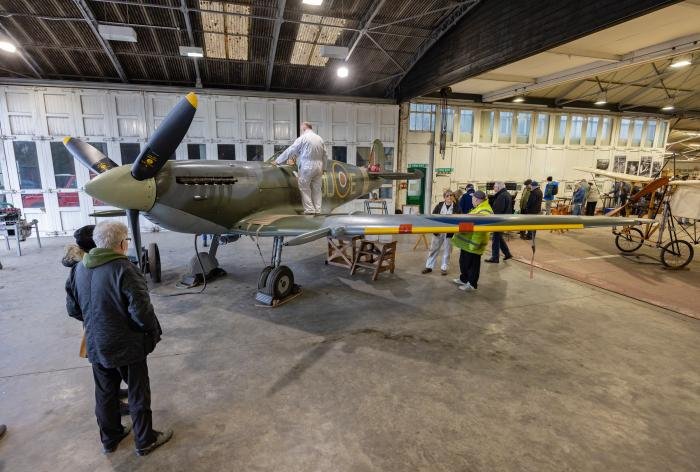
The Gladiator was midway through its annual service and as such was suitably ‘undressed’ for the event, giving a great view of its internal construction. The aircraft’s wonderful Bristol Mercury engine was also exposed without its cowlings, showing off its distinctive piston pots around the central hub of the engine. Sandwiched between the Spitfire and the Gladiator, the Blériot XI prototype certainly offered a contrast to the later designs and enthusiasts appreciated the chance to examine the UK’s oldest flying aircraft at close quarters. The 1909-built monoplane was having some carburettor work carried out and was back in one piece carrying out engine runs the day after.
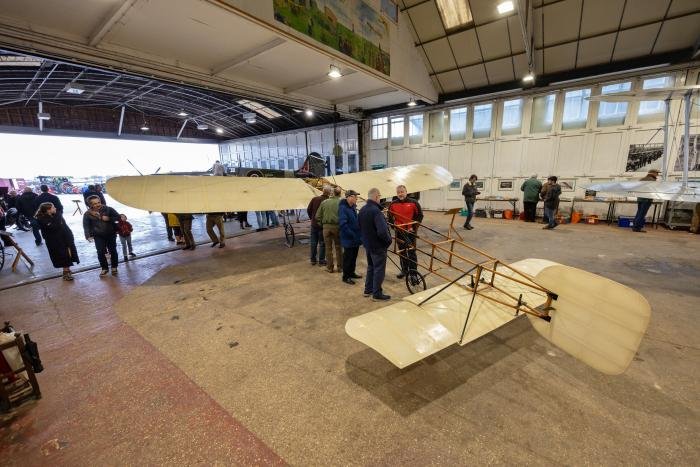
At the back of the hangar, having already had its annual service, the Bristol F2b was on show with parts of its cowling removed. Steps enabled visitors to get a good look into the cockpit, along with ‘mood lighting’. In addition, the Hucks starter was positioned in front of the aircraft – staff gave demonstrations on how the Ford Model T-based device is operated. The vehicle section was also well represented, with exhibits and demonstrations.
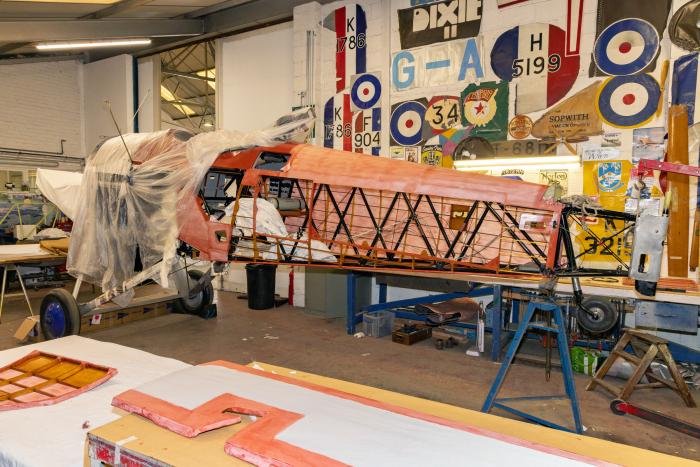
More work has been carried out on the Hind since these words were written – the aircraft’s fabric skin has been applied – bringing to mind the prospect of seeing the silver biplane airborne in the not too distant future. The team is working on the project at a steady rate in between other commercial commitments. The wings remain the last significant piece of this particular jigsaw, but the reality of seeing a Hawker Hind over Bedfordshire is edging ever closer.

